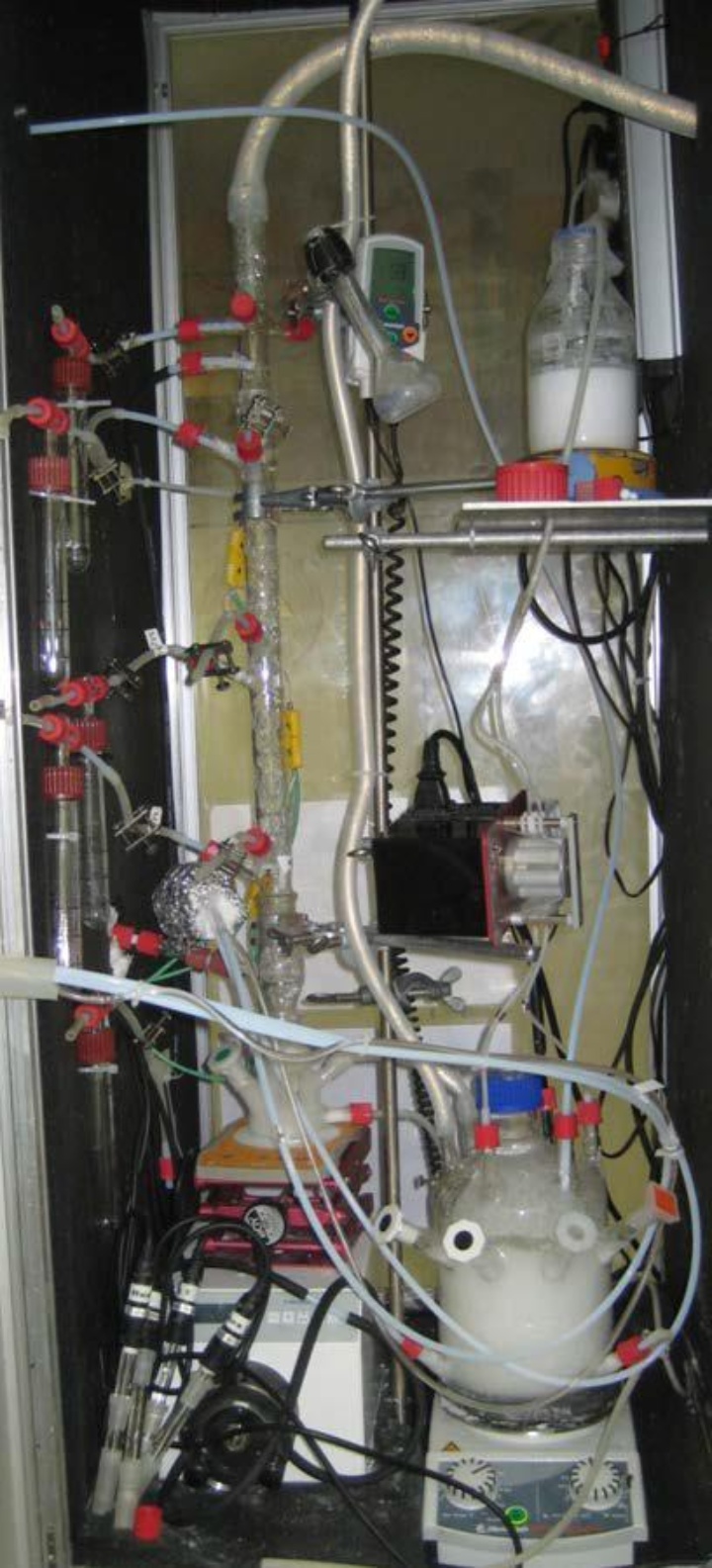The lab-scale FGD consists of an absorber column and an external FGD sump. It uses synthetic flue gas, which can be adjusted according to the desired investigated parameters and consists of a carrier gas flux containing 15 Vol.-% CO2, 3.5 Vol.-% O2 and balance N2. Further components as SO2, HCl, H2O, Hg0 and HgCl2 can be added in wide concentration ranges via mass flow controllers and dosing valves. The synthetic flue gas is preheated to 150°C before it is led into the bottom of the absorber column, where it is counter-currently contacted with the circulating scrubber slurry, which is fed into the absorber top by a peristaltic pump.
Measurement devices along the absorber column allow the investigation of gas phase concentrations and the extraction of liquid samples along the column height. The loaded scrubber slurry is collected in the bottom of the absorber column and subsequently transferred through a siphon into the external sump. There, forced oxidation of dissolved sulfite species is ensured by the aeration of the stirred slurry. The aeration air flux and the slurry temperature can be adjusted according to the desired investigations. ORP and pH in the external sump as well as in the bottom of the absorber column are continuously measured and logged. Moreover, thermocouples are installed in the external sump, the bottom of the absorber column, the gas inlet and outlet and at different heights along the column.
Solid content of the circulating scrubber slurry can be adjusted and the addition of fresh limestone slurry via hose pump is triggered when pH in the external sump falls below the adjusted pH value. Hence, the test rig is operated at constant pH value. Slurry composition can be adjusted to the desired concentrations by the addition of pure substances prior to the experiments.
Gas concentrations are measured continuously at the outlet of the absorber column as well as in the aeration air flux leaving the external sump, which enables for example the differentiation between re-emitted Hg and Hg which was not absorbed at all in the first place. Measurements of O2, SO2 and CO2 are carried out with on-line gas analyzers (paramagnetic and NDIR sensors) and total mercury (HgT) is measured according to the principles of atomic absorption spectroscopy (AAS) combined with a SnCl2 reduction unit upstream the analyzer. Concentrations of anions in the scrubber slurry are determined by ion chromatography and dissolved Hg2+-species are measured via cold vapor AAS. Sulfite concentration of the slurry can be measured continuously as well.
Contact

Marc Oliver Schmid
Department Flue Gas Cleaning and Air Quality Control (RuL)
Deputy Head of Department


